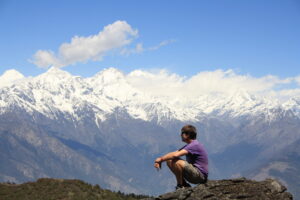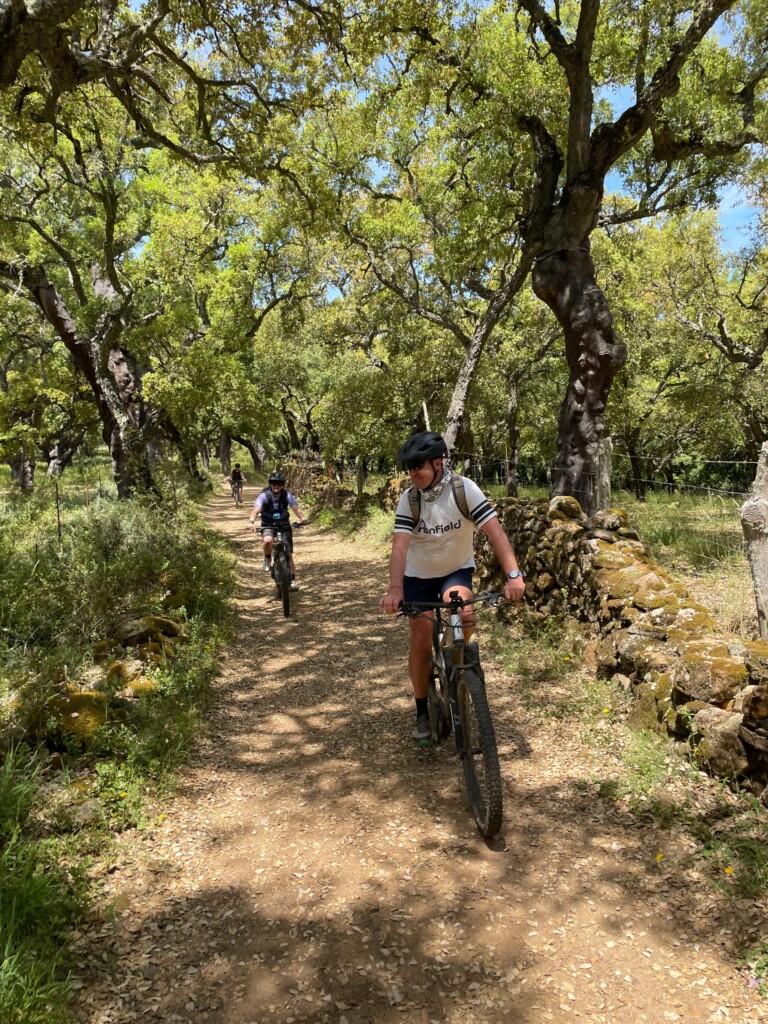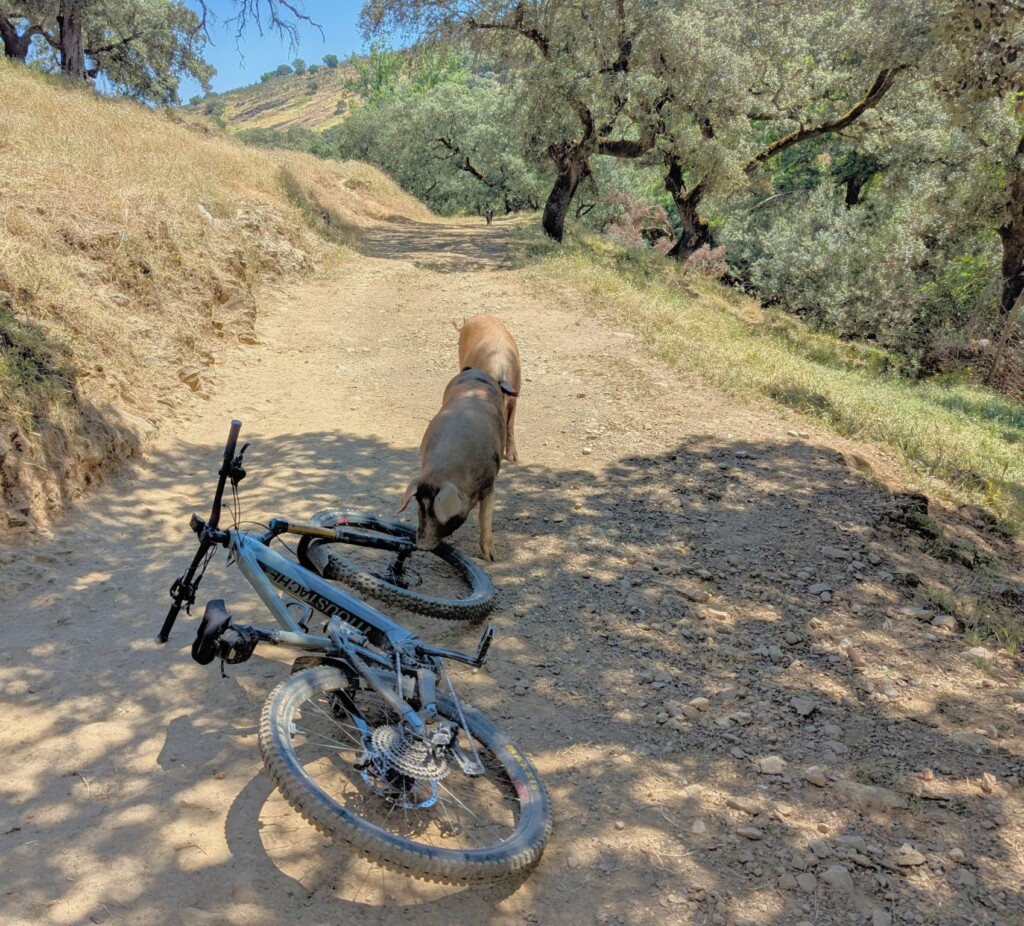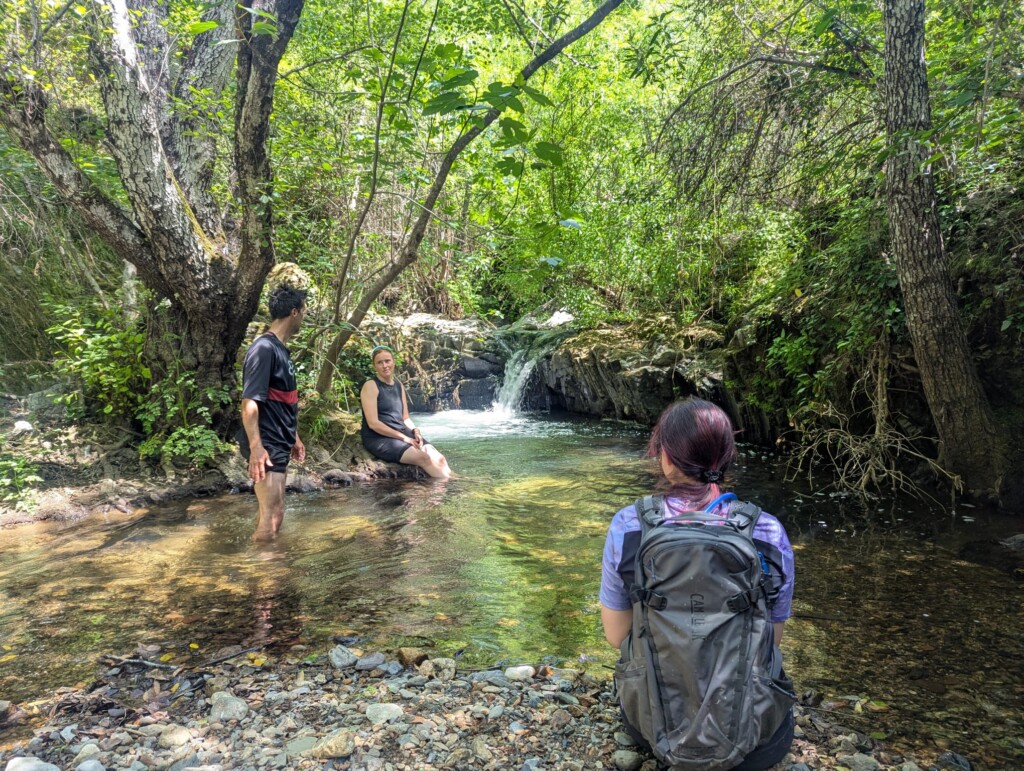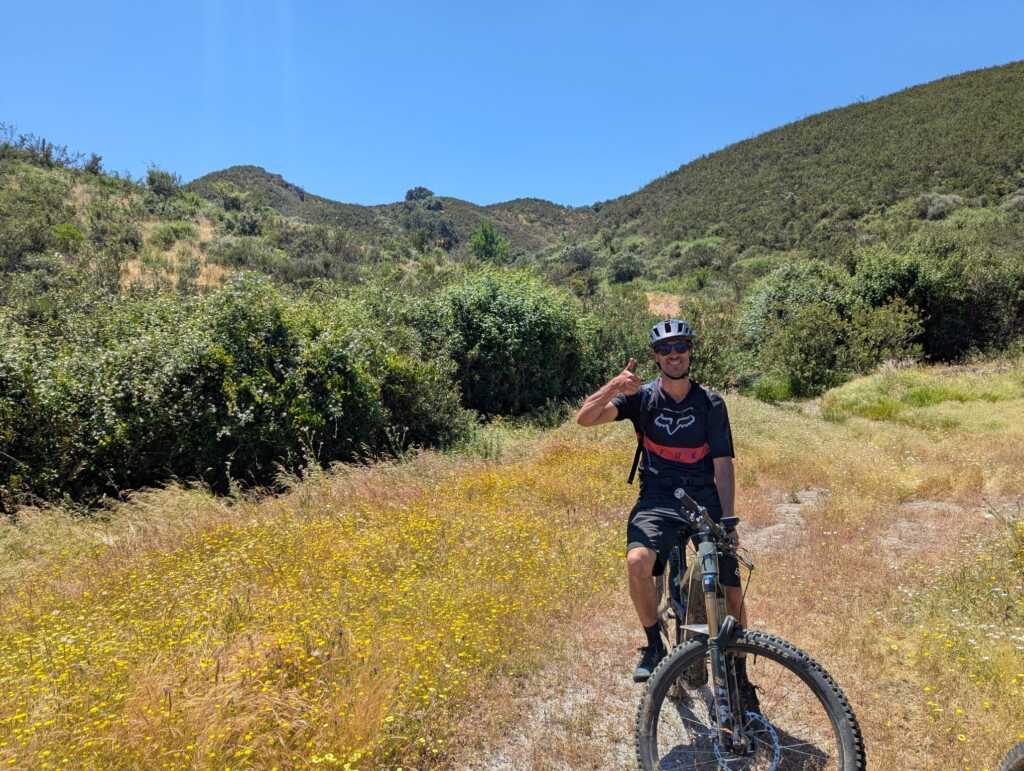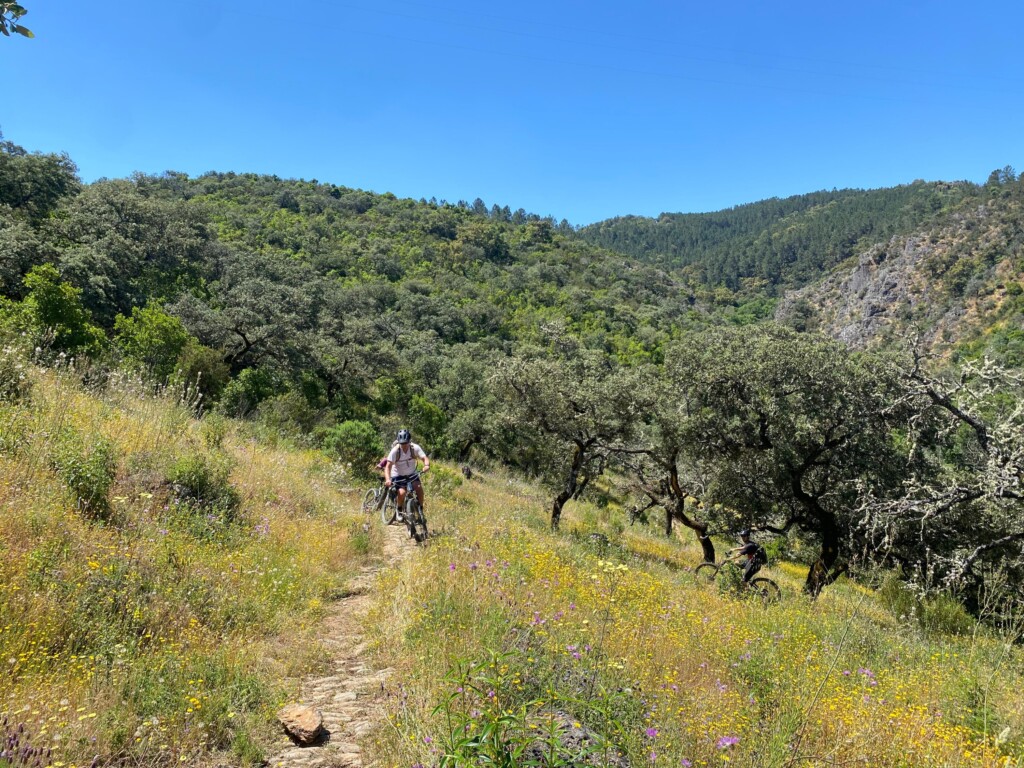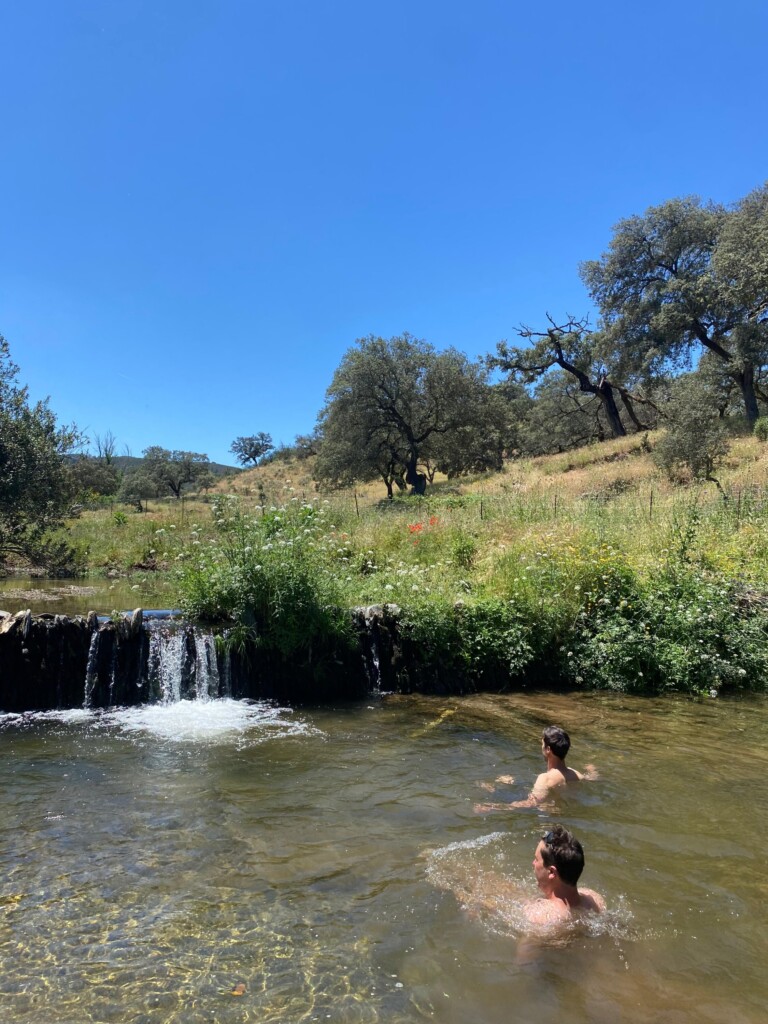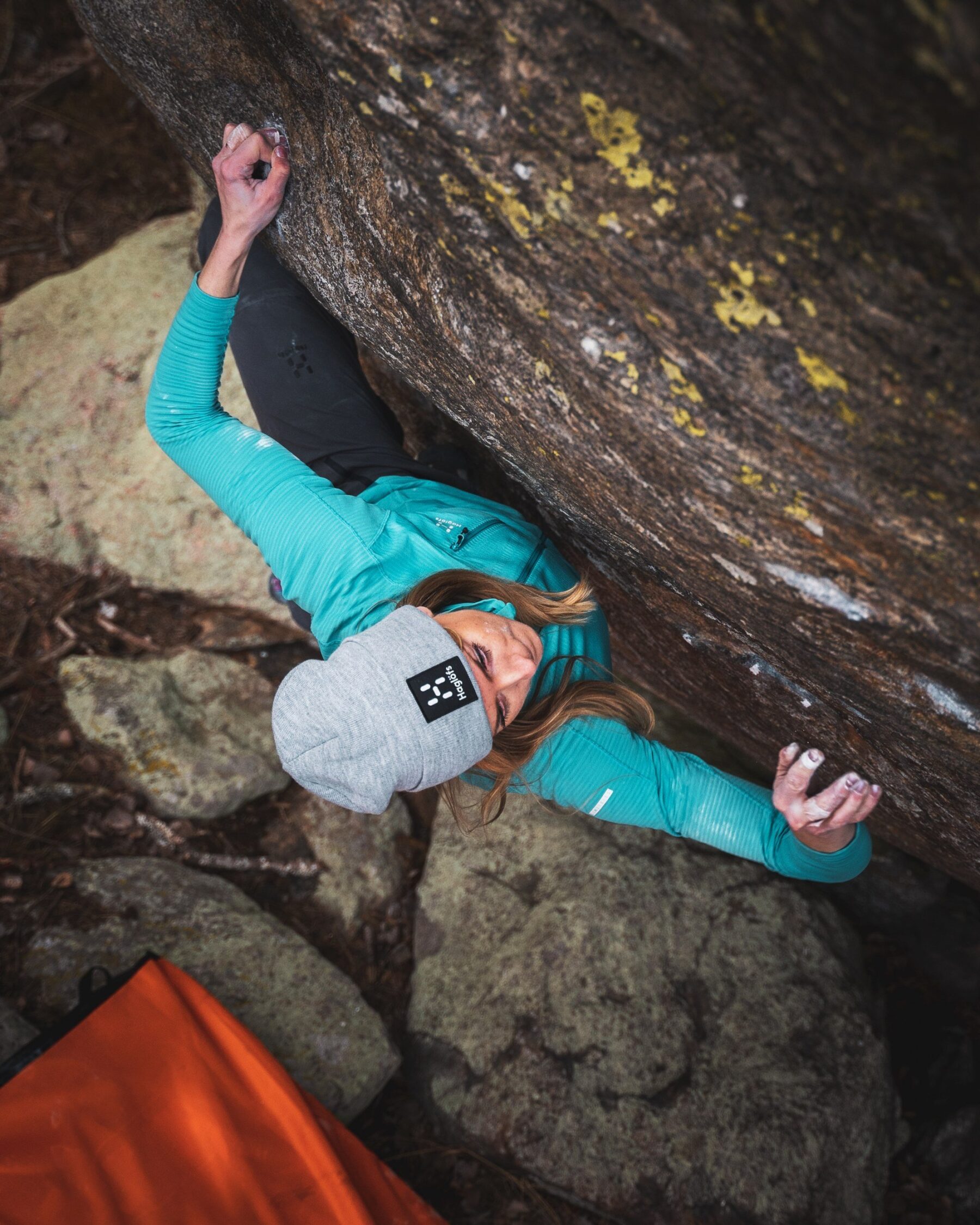Home Story Smuggler lanes and donkey trails: e-MTB in Andalusia
Smuggler lanes and donkey trails: e-MTB in Andalusia
Feature type Story
Read time 12 mins
Published May 30, 2025
Author Matthew Pink
Photographer Matthew Pink
We join up with an adventurous couple looking to show their beloved Andalusia to the world in a new light. Tooled up with money-can’t-buy local knowledge and a black book of connections (ok, farmers’ phone numbers), we put a quintet of Moustache e-MTB bikes through their paces on a seemingly never-ending tissue of trails and tracks criss-crossing the Andalusian campo.
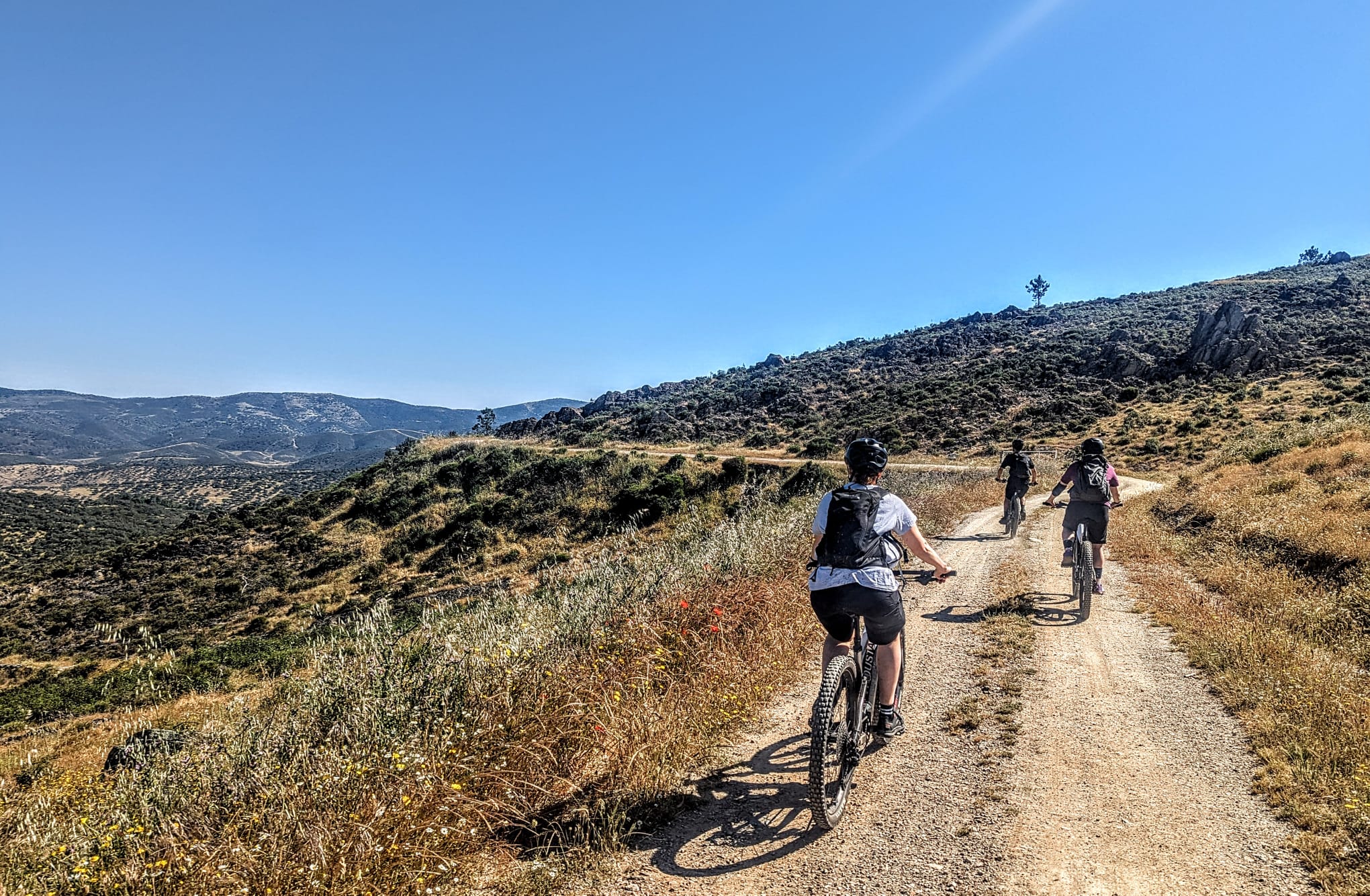
What do you think of when someone says ‘Andalusia?’ Sunburn, sangria and lulling off in a sleepy siesta to the muffled clunk-clang of a distant donkey’s bell?
Maybe it’s time to think again, amigo.
We’re here in the Sierra de Aracena, tempted by the promise of minimal trail traffic, secret routes and rooty lines in an area ripe for reconsideration and refuelling on the very best jamón ibérico.
We’re greeted and guided by snow-hound couple Daisy and Eliott who have transported their Alpine mindsets to the gnarlier lands of the sierra to see what can be achieved by introducing e-MTBs into the equation. A fair bit, it turns out. Harnessing the same spirit that Daisy’s parents used to reimagine and carefully cultivate the farm from destitute ruin post-Franco to a flourishing and nourishing place overflowing in flora and fauna, Daisy and Eliott are applying it to old smuggler routes and mule tracks. Their cheat code? The game-changing possibilities of e-MTB.
This is an area veined by ancient and hidden village-to-village routes. An area where the remote pueblos blancos are connected by timeworn trails often unmarked but now privately and personally logged by Eliott and Daisy, offering soulful riding through Andalusia’s rustic heartland.
Those trails join up with the aforementioned narrow cobbled mule tracks (veredas empedradas), themselves remnants of centuries-old trade routes. The stone-paved paths climb and drop steeply through remote valleys, grippy when dry, slick and probably pretty punishing in the wet. Not that we see any of that in the balmy spring sunshine.
Looping all this together are rolling dips, occasional rock gardens and flowy trails through open woodland (where you can ride all day and barely see another human) and paths into la dehesa.
La dehesa is a human-shaped landscape maintained over centuries, deeply tied to rural Andalusian identity and tradition where we now zip through the patchwork of scattered holm oaks (encinas) and cork oaks (alcornoques). The trees are spaced out to allow light (lots of that round here, you know) through, creating a savannah-like environment perfect for grazing and, now we know, trail visibility.
It would have been traditionally used for livestock grazing especially the ubiquitous (round here) black-grey Iberian pigs, cattle, and sheep, acorn foraging, honey production, mushroom and firewood harvesting. But now, Daisy and Eliott’s instincts have found another, more adrenalised use.
“Watch your feet, that’s actually an adder.”
Shizzers, so it is. We’re just loading up and rolling out for the first day from the farm’s stables. Tucked away in a shady corner of the farm’s acreage, they have now been cunningly adapted to home Eliott’s hip–hop soundtracked bike workshop and a set of Moustache Samedi 29 Trail 5s boosted by Bosch motors. The rides are pleasingly primed with grip control and balance immaculately.
The adder skitters away into the shadows, we fill our bottles and light out for the first day of 45km-ish riding.
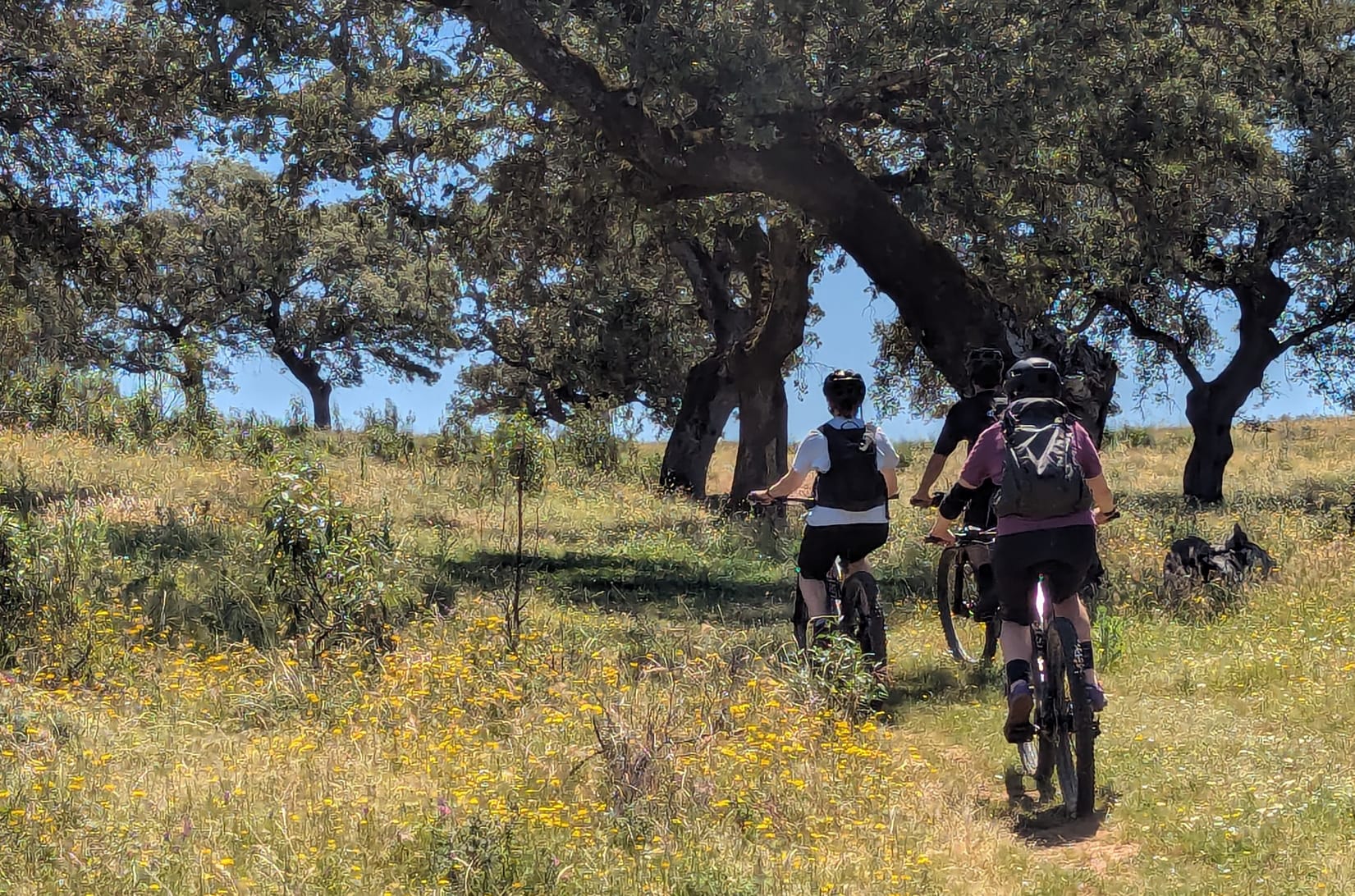
For the lion’s share of the day, the trails are not too dense and not too steep, just the right kind of fast, snaking single track that lets you keep your momentum. In between stops at waterholes and for refreshments, we reach several rolling ridgeline traverses with open vistas. These long, airy traverses above the valleys give stunning views over the lush and green Sierra Morena foothills with the more exposed, wind-whipped sections and sporadic slabby rock gardens to keep us alert up top.
There are sometimes rocky, more technical descents off some of the ridgelines. These have exposed sections with loose baby heads and embedded bedrock requiring pretty precise line choice and solid braking control. But nothing too drastic as to kill the rhythm we’ve struck.
En route to Daisy’s parents’ new farm, some 40km away across the sierra for lunch, we pick up flowy singletrack through the dehesa oak woodland. These undulating ribbons of dirt wind through ancient holm oak groves, with faster, pumpable terrain under a canopy of twisted trunks, scattering the pigs as we pass. We let our guard down for a wee moment dismounting for a gate and one of the more confident swines steps up to try and bite a chunk out of Eliot’s front tyre. A touch of piggy revenge, perhaps.
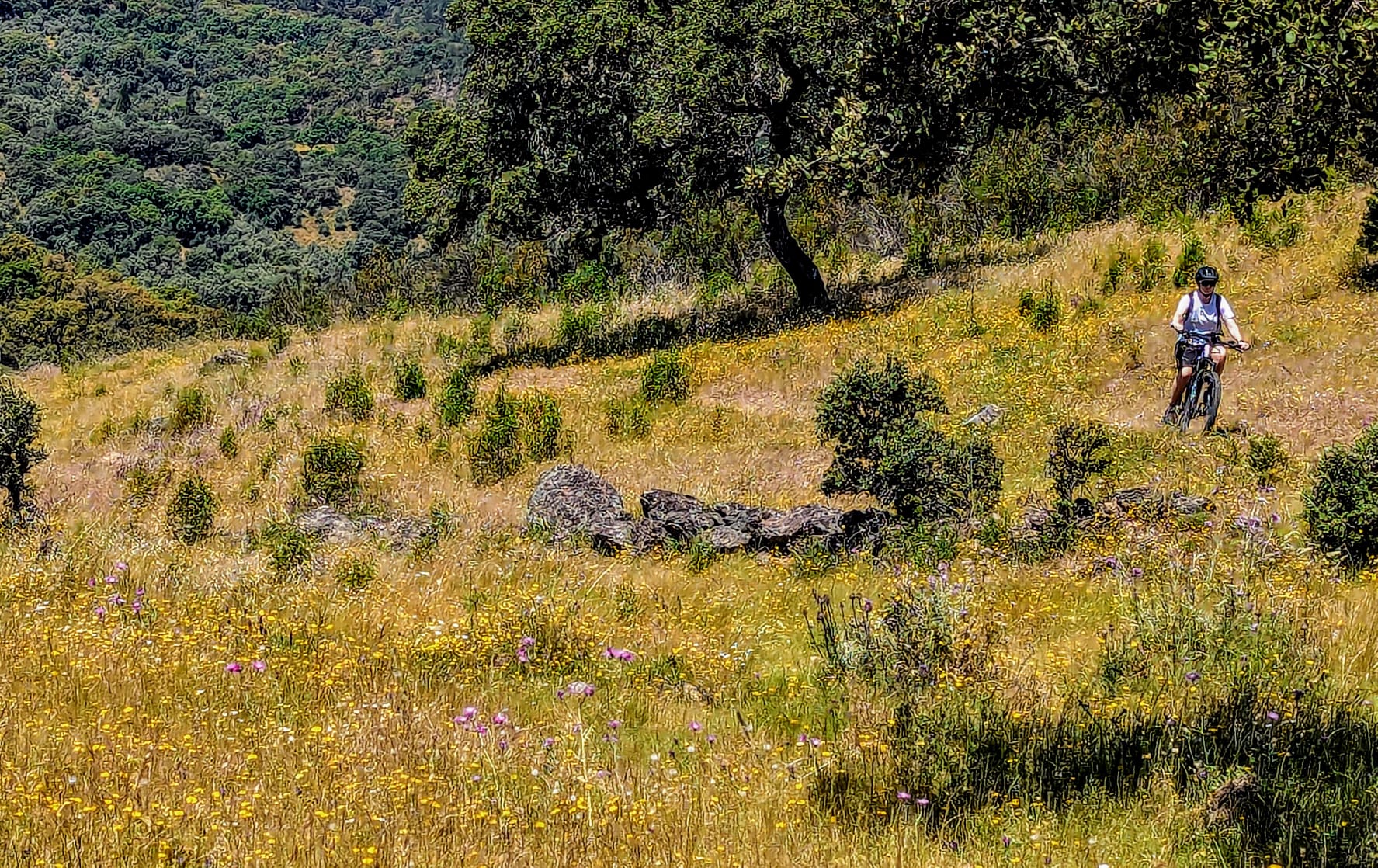
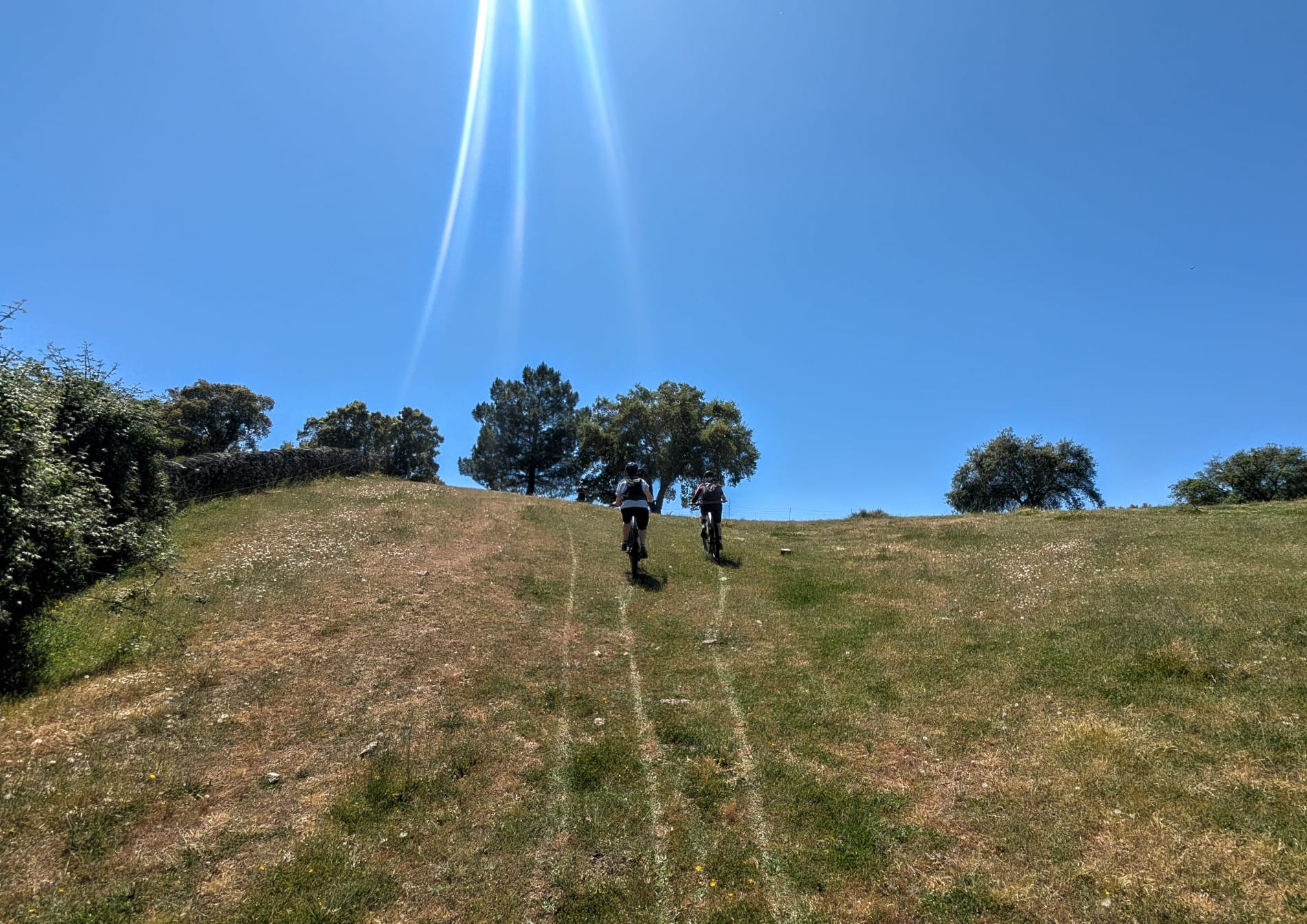
Daisy’s family roots in the region mean that the local farming fraternity have granted exclusive access to their land and pastures for our e-MTBs and us. That means pretty much every ride carves a new route or at least a new tweak. Today we cut a swathe across la Coronada which is their friend Antonio’s farm. The name translates as ‘the crowned’ and with Spanish spring in full bloom, the pastures are freckled with yellow wildflowers and dashes of purple.
Natural switchbacks crop up on the ancient caminos reales. Hand-cut by generations past, these trails wind steeply through the cork oak forests with tight, uneven turns and loose loam which is perfect for our agile Moustaches.
The next day, we’re heading westward toward Galaroza, tracking next to the Múrtiga river to yet another picturesque pueblo called Castaño del Robledo and then on to Alajar.
We ride through erosional gullies and dry-ish riverbeds: faster, raw terrain with deep ruts, loose shale, and some shifting gravel. There are surprises, from sudden drops to hidden berms shaped by (presumably) goat and donkey traffic and stormwater runoff. Eliott, as ever, is ten bike lengths ahead, bunny-hopping every root and calling out trail trivia with studied encyclopaedic glee. But mostly it’s more sheltered riding on shaded paths and rises with views to lush, verdant landscapes. Much of this area is deceptively well watered thanks to the westerlies coming off the Atlantic, upturning another preconception of the region.
Like the previous day, we stop in the centre of one of the villages where red-rumped swallows wheel and shriek around the church spires in dizzying numbers. We refill our bottles at fountains under bell towers guarded by white storks and snack on spicy olives and salty crisps.
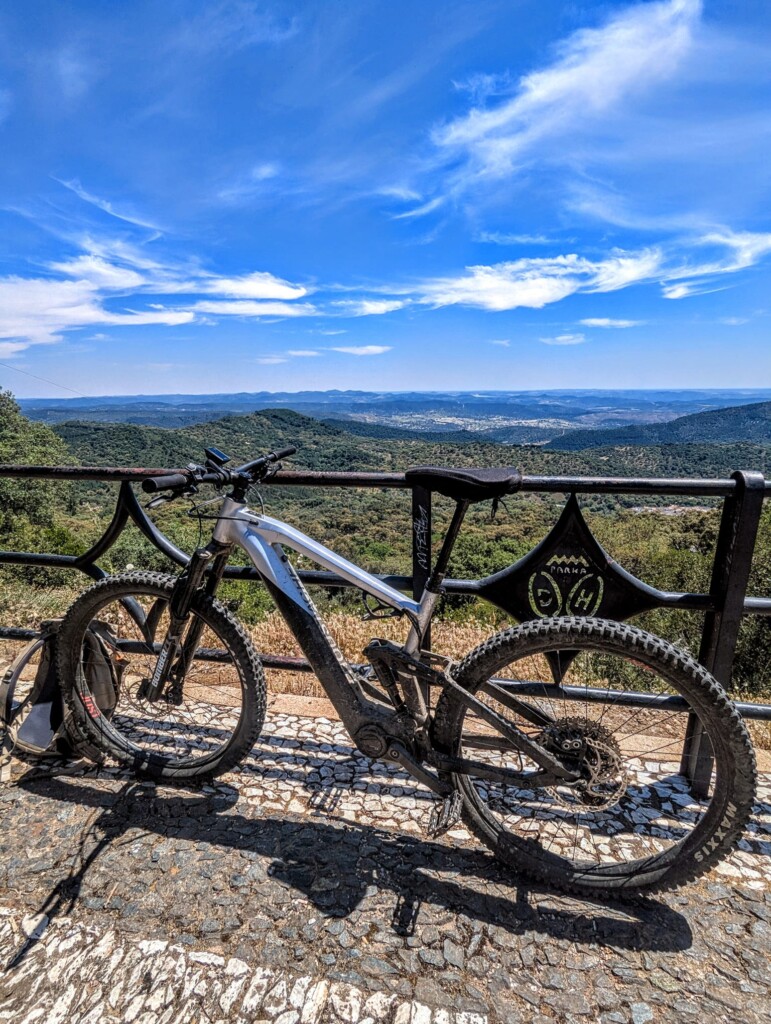
Pushing off for the final runs of the trip, the network of trails seems to become even more dense and variable. Asking Eliott how on earth he chose or discovered the routes when presented with such dizzying variety, he responds simply with a shrug, “I just got lost.”
Letting the trail choose for you and veering into the unknown is ironically often the best way to get a truer sense of self or at least an inner peace. And despite the high octane hits, that has never been truer than here in the sierra spring.
After a final lunch of huge fresh tomatoes sprinkled with salt, montadito de lomo sandwiches with warm garlic butter and spinach croquetas washed down with cold, cold beer, we rise up to the mirador over Alajar to get the full panoramavision effect.
We’ve only smashed through about 90km in a couple of days but the farm’s preferred suggestion is a 5-day stint (or 3 for the less saddle-experienced) for groups where the trail variety on offer never dips. It also offsets the jarring and juddering of trail time with massages and yoga back at the ranch, not to mention exquisite food cooked from the heart and with produce from their own huerta (vegetable garden) and livestock.
The story of this farm and family and now the trails that extend it, is rooted in passion, love and a ‘let’s-give-it-a-go’ attitude. It’s not been without its dramas. Foundations have been dug, futures have been built and lines connected between generations, cultures and purpose. Axes have been wielded (ask Daisy), scythes swung and dreams realised. Nothing lasts forever though and now comes the next evolution. But this heartland is in safe hands once again.
This trip was made possible by the good people at la Finca El Moro, a family-built and run farm on the outskirts of Fuenteheridos in the Huelva province of southern Spain.
You can fly to Seville from a variety of UK airports from where the family will arrange transfer.
You can of course now take the train. You should consider that because la Finca el Moro offers incentives for those that do. Other (further) airport options include Faro over the border in Portugal (a 3-hour drive) and Malaga.
To book an e-MTB adventure or yoga retreat, get in touch with Daisy via the website.
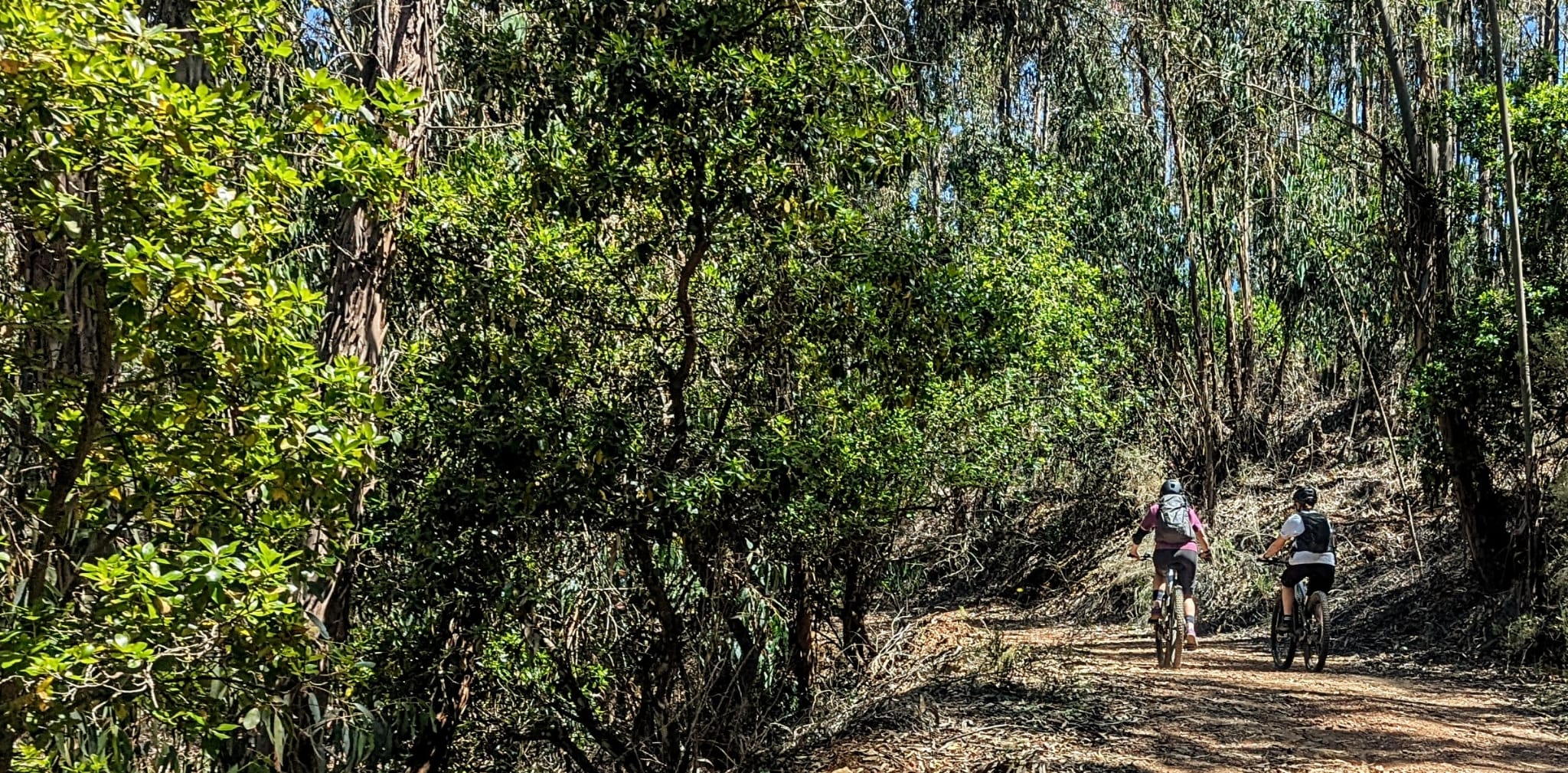
Don’t miss a single adventure
Sign up to our free newsletter and get a weekly BASE hit to your inbox
You might also like
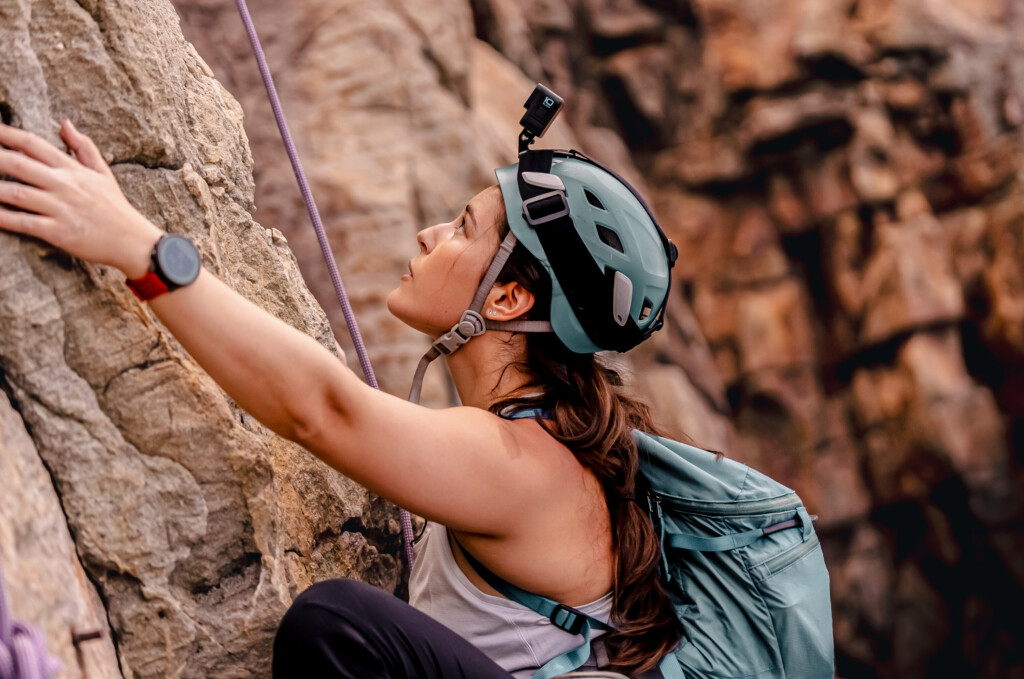
Photo Essay • BASE editorial team • Mar 18, 2024
Hunting happiness through adventure in Taiwan
BASE teams up with adventurer Sofia Jin to explore the best of Taiwan's underrated adventure scene.
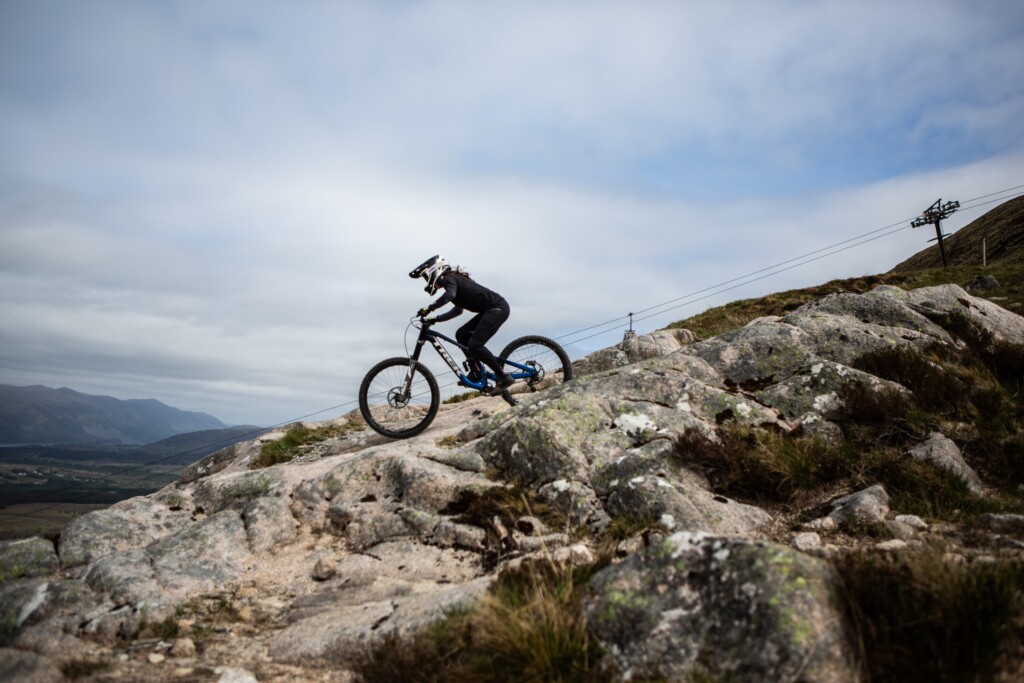
Interview • Beth Chalmers • Sep 15, 2023
Mud, Rock and Roots: In Conversation With Nina-Yves Cameron
Beth Chalmers catches up with the Scottish downhill racer, talking progress, community and how the Highlands shaped her as a rider
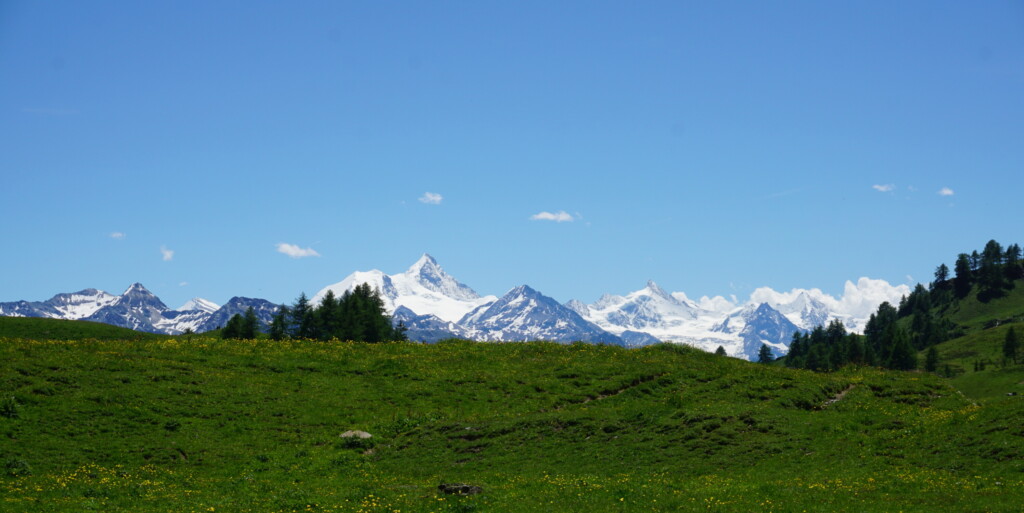
Story • Chris Hunt • Jul 04, 2023
Evolution of Flow: E-mountain Biking in the Swiss Alps
Exploring Crans Montana and the Tièche valley on two wheels
